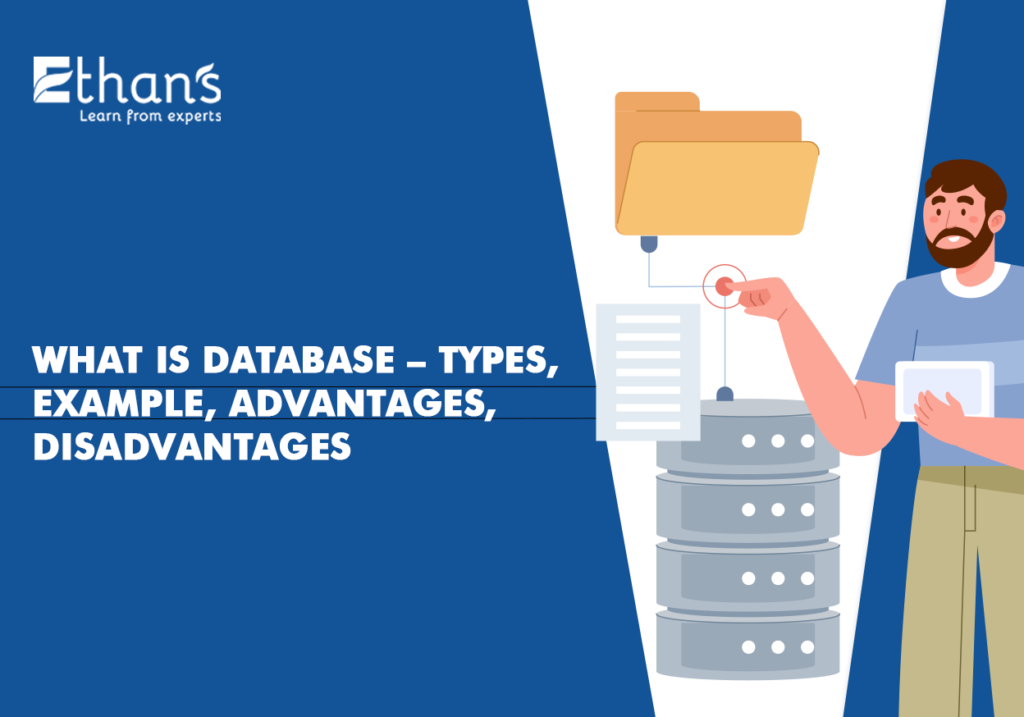In today’s digital age, data is a cornerstone of nearly every aspect of modern life. But what exactly is a database, and why does it matter? Understanding the intricacies of databases, including their types, examples, advantages, and disadvantages, is crucial for anyone navigating the digital landscape. This article delves into the fundamental aspects of databases, shedding light on their importance and exploring the nuances that make them integral to various industries and applications.
The Essence of Databases
What Is a Database?
A database is a structured collection of data organized for easy access, management, and retrieval. It serves as a centralized repository where information can be stored, manipulated, and analyzed efficiently. To master the skills of Data Analytics check Data Analytics Course in Pune.
Importance of Mastering SQL Basics Before Diving into Databases
Structured Query Language (SQL) fundamentals are crucial before delving into databases. SQL serves as the backbone of database management, allowing users to retrieve, manipulate, and manage data efficiently. Mastery of SQL basics empowers individuals to craft complex queries, optimize database performance, and troubleshoot issues effectively. Without a solid understanding of SQL, navigating databases becomes challenging, hindering productivity and potentially leading to errors.
By mastering SQL fundamentals first, individuals build a strong foundation for database management, ensuring they can leverage the full potential of databases to store, retrieve, and analyze data accurately and efficiently.
For beginners, diving into terminal coding offers a solid foundation to grasp the setup and execution of SQL commands effectively. Start your journey here.
Types of Databases
- Relational Databases: These databases organize data into tables with rows and columns, facilitating relationships between different datasets.
- NoSQL Databases: Unlike relational databases, NoSQL databases offer a more flexible data model, making them suitable for handling large volumes of unstructured or semi-structured data.
- Object-Oriented Databases: These databases store data as objects, allowing for complex data structures and relationships.
- Graph Databases: Graph databases represent data as nodes and edges, making them ideal for exploring relationships between interconnected entities.
Examples of Databases
- MySQL: A popular open-source relational database management system (RDBMS) used in web development and other applications.
- MongoDB: A leading NoSQL database that offers scalability and flexibility for handling diverse data types.
- Microsoft SQL Server – A scalable solution for data storage and management, powering countless applications worldwide.
- Oracle Database: A robust RDBMS known for its reliability and performance in enterprise environments.
- Neo4j: A graph database that enables efficient traversal of relationships in complex datasets.
Advantages of Databases
Efficient Data Management: Databases provide a structured framework for organizing and storing data, ensuring efficient data management and retrieval.
Data Integrity: With built-in mechanisms such as constraints and validations, databases maintain data integrity and consistency, minimizing errors and inaccuracies.
Scalability: Many modern databases are designed to scale effortlessly, allowing businesses to accommodate growing data volumes without compromising performance.
Improved Decision Making: By providing timely access to accurate and relevant data, databases empower organizations to make informed decisions and gain valuable insights.
Data Security: Databases offer robust security features, including access controls and encryption, to protect sensitive information from unauthorized access and breaches.
Must Read – Why is Time Series an Analyst’s Best Tool for Analysis?
Disadvantages of Databases
Complexity: Setting up and maintaining databases can be complex and resource-intensive, requiring specialized knowledge and skills.
Cost: Implementing and managing databases, especially enterprise-grade solutions, can incur significant costs in terms of licensing, infrastructure, and maintenance.
Single Point of Failure: In centralized database architectures, a failure in the database system can disrupt operations and lead to downtime.
Data Redundancy: Databases may suffer from data redundancy, where the same information is stored in multiple locations, leading to inefficiencies and inconsistencies.
Performance Issues: As databases grow in size and complexity, performance issues such as slow queries and resource contention may arise, impacting user experience and productivity.
FAQs (Frequently Asked Questions)
1. Are databases only used in business settings?
Databases are utilized across various domains, including business, healthcare, education, finance, and more. Any scenario that involves organizing, managing, and analyzing data can benefit from a database.
2. What are some real-world examples of database applications?
Real-world applications of databases include customer relationship management (CRM) systems, inventory management systems, online banking platforms, social media networks, and e-commerce websites.
3. Can databases handle multimedia data such as images and videos?
Yes, modern databases are capable of storing multimedia data, often leveraging specialized data types and storage mechanisms to accommodate diverse data format
4. What role does indexing play in databases?
Indexing improves query performance by enabling faster data retrieval based on specific criteria. It works akin to a book index, allowing quick access to relevant data without scanning the entire database.
5. How do databases ensure data security?
Databases employ various security measures, including access controls, encryption, authentication mechanisms, and auditing, to safeguard data against unauthorized access, tampering, and theft.
6. Are there any alternatives to traditional databases?
Yes, alternatives to traditional databases include file-based storage systems, key-value stores, document-oriented databases, and in-memory databases, each offering unique features and trade-offs.
Conclusion
In conclusion, databases play a pivotal role in modern information systems, serving as the backbone for data-driven decision making and innovation. By understanding the diverse types, examples, advantages, and disadvantages of databases, individuals and organizations can harness the power of data to drive success and achieve their objectives.
Databases are indispensable tools in managing and organizing data efficiently. From relational to NoSQL databases, like those offered by Ethan’s Tech, they empower businesses with secure storage, streamlined access, and enhanced decision-making capabilities. Despite challenges, their benefits far outweigh drawbacks, making them essential in today’s digital landscape.




